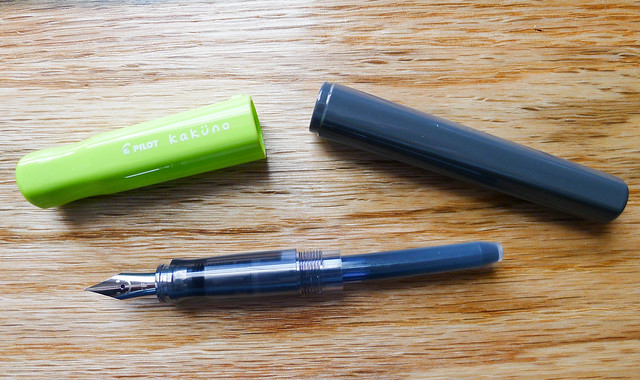There is wow and there is WOW. The Platinum 3776 Century UEF nib fountain pen that Thomas loaned me late last year falls clearly into the latter category. This nib is something to behold.
Thomas knows my preference for super-fine pens and this one takes the cake. And the thing is, I was wrong in my handwritten review below. Mike Masuyama did not grind down the pen to this size. This is the stock UEF nib from Platinum! According to Thomas, Masuyama only tuned the nib so it was perfectly aligned, wet, and smooth. I can't fathom how steady Mr. Mauyama's hands are to be able to work on pens this fine. I would end up with some wonky half-stub nib if I even thought about trying this.
The 3776 in itself is one of Platinum's cornerstone pens, similar in style and price to Sailor's Sapporo line and Pilot's Custom Heritage line. Basic, but classically designed barrels and 14k gold nibs at a fair price. The 3776 was a glaring omission on my 2014 wish list from yesterday's podcast and I can assure you I will own one by the end of the year.
Will it be the UEF nib? I'm not sure, but probably so. I own several Japanese EF nib pens so why not go one step further. This one was an amazing writer. The line was as advertised - consistent and smooth - and required only a very light touch to move it across the page. My only hesitancy is if I could use the UEF nib all day or would it actually be too fine? Only time will tell I guess.
For your reading pleasure, Thomas passed along this Tipping Sizes Comparison Chart from Nibs.com where you can compare different nib sizes from company to company. Notice that only Platinum/Nakaya and Sailor dare to dip their toes in the 0.1 mm range. Also be sure to read up on the history of the 3776 from Platinum and watch the nib size comparison video from Brian Goulet. Awesome stuff!















